



















Now I really do not know what Remington was thinking about when they produced this rifle. I am going to blame it on the 60’s myself.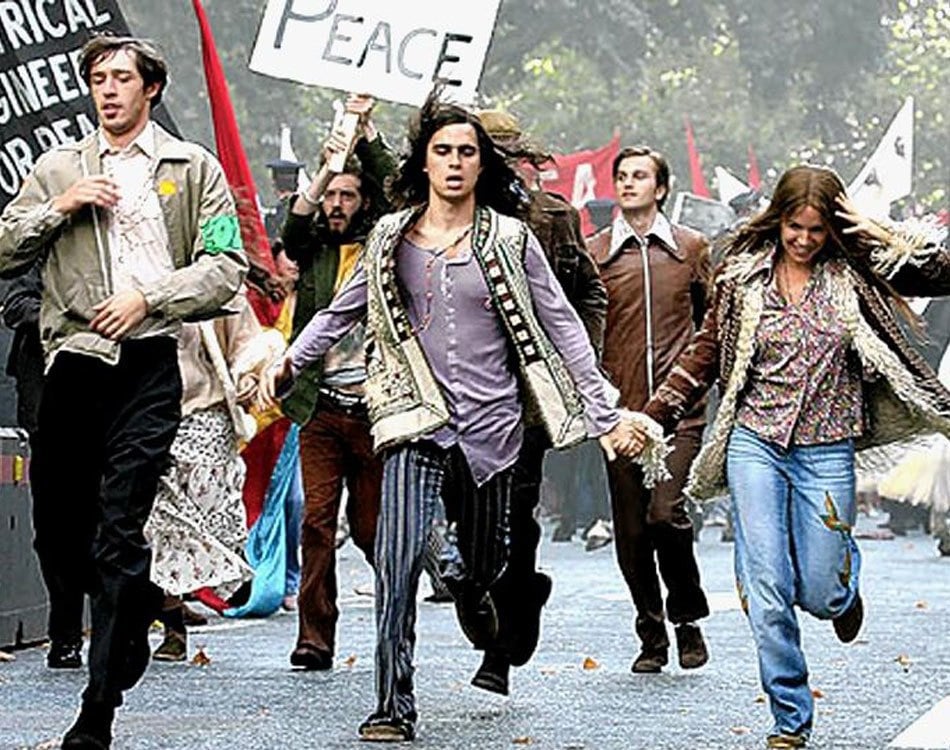
In that it was one of the strangest looking guns that they have ever put out for the shooting public.
What with looks like the “Dog Leg bolt handle of the 1917 Enfield. Then the really short barrel with the ray gun looking rib in top. Plus the press checkered wood stock and the plastic trigger guard. Hmmm….
All right you say. How does it shoot? Because if it shoots well then all is forgiven. Right?
Well I have shot this critter a couple of times with other folks gun & ammo. Now it is a light and very handy gunto say the least.
But the recoil and the report in the bigger calibers. Are a thing to behold. To say that they are spectacular is about on target.
Okay as I have said before. I am not the best shot out there folks. But even on the bench rest. It was not my best work so far. (I have shot both the 6.5 Rem & the 35 Rem by the way)
So my modest suggestion is that one should think long and hard about getting one of these puppies. Here is some more information about these rifles.
Thanks for your time!
Grumpy
| Type | Bolt Action rifle |
|---|---|
| Place of origin | |
| Production history | |
| Designer | Remington R&D[1] |
| Manufacturer | Remington Arms |
| Produced | 1964–1967 (original)[2] 1971–1980 (Model 600 Mohawk)[2] |
| No. built | 94,086[1] |
| Variants | see Variants |
| Specifications | |
| Weight | 5.5 lb (2.5 kg)[2] |
| Length | 37.25 in (94.6 cm)[2] |
| Barrel length | 18.5 in (47 cm)[2] |
|
|
|
| Cartridge | .222 Remington .223 Remington 6mm Remington 6.5mm Remington Magnum .243 Winchester .308 Winchester .35 Remington .350 Remington Magnum[1] |
| Barrels | Round with ventilated nylon rib[2] |
| Action | Bolt action |
| Sights | Blade ramp font, fully adjustable rear. |
Remington Arms Model 600 was a push-feed bolt-action riflepro
[hide]
The Model 600 was designed to be a guide rifle. Its most noticeable feature was the vent rib barrel. There were approximately 94,086 rifles produced in the available calibers of: .222 Remington, .223 Remington, 6mm Remington, 6.5mm Remington Magnum, .243 Winchester, .308 Winchester, .35 Remington, .350 Remington Magnum.
The rarest is the one chambered in .223 Remington; only 227 were produced—most in the final year of production.[citation needed] Before it was officially added to the line, you could order a Model 600 out of the custom gun shop in .223. At least one Model 600 in .223 came out of the Remington Custom Shop in 1966. A successor model, the Remington Mohawk 600 (’72-’79) available in .222, .243 and .308 comprised total production of only 142 with a Mannlicher-style stock. But the rarest Original Model 600 was and remains the .223.
There were several variations in the original production line and they were the: (1) 600 Magnum Carbine, (2) 75th Anniversary Montana Statehood, & (3) 100th Anniversary Montana Territory.
While loved by the majority of its owners, the death knell of the original Model 600 and its descendants were its looks; it was largely despised by critics, even though it shot exceptionally well. The original barrel length of 18.5 inches resulted in more felt muzzle blast, especially in the .350 Rem Mag. This actuality and perception led to failure of the .350 Rem Magcartridge in the later guns of different models too. Remington finally abandoned the cartridge in the late 1970s, until resurrected in 2003 with the Model 673.[5]
The 600 series received attention through the writings of Jeff Cooper, who used the model 600 as the basis for his “Scout I” and “Super Scout” scout rifles.













































Additional specifications are listed below.
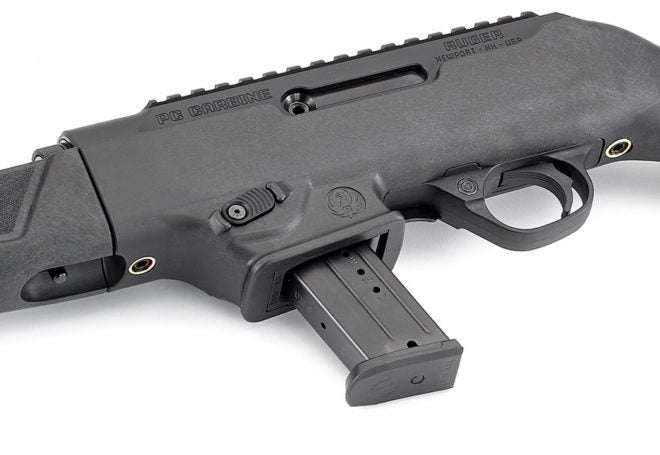
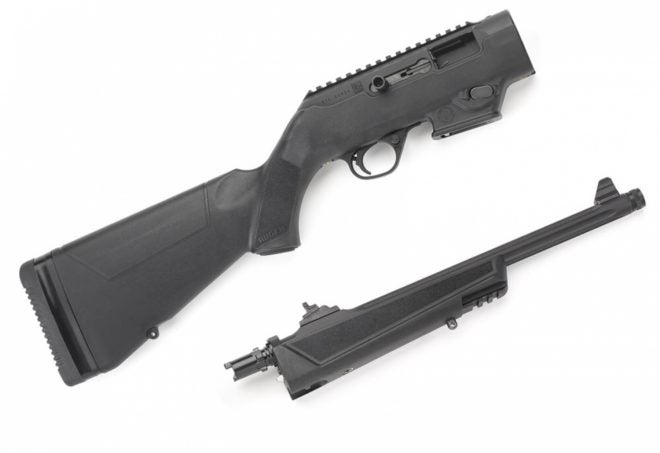
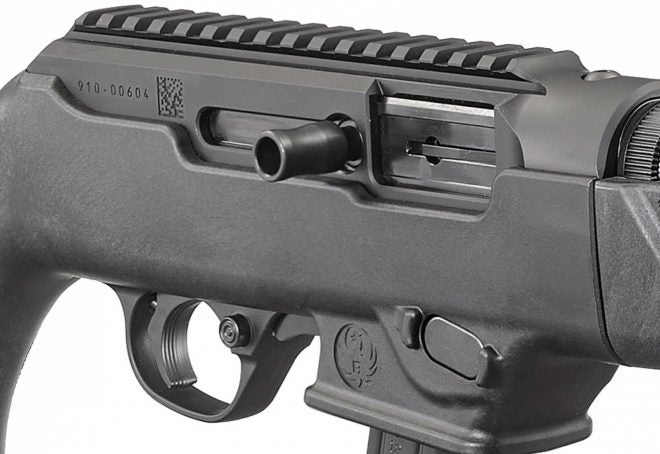
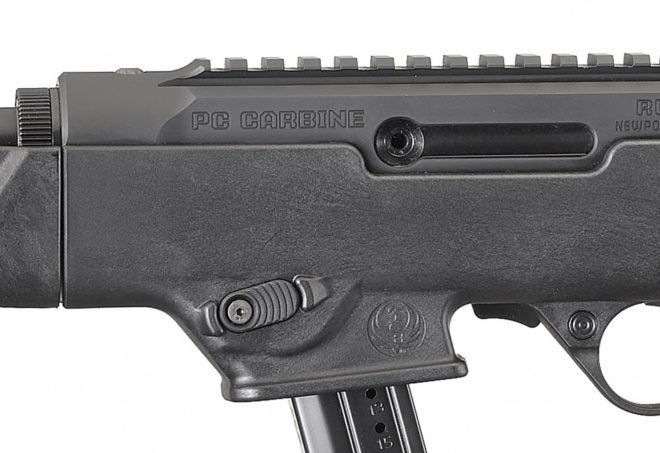
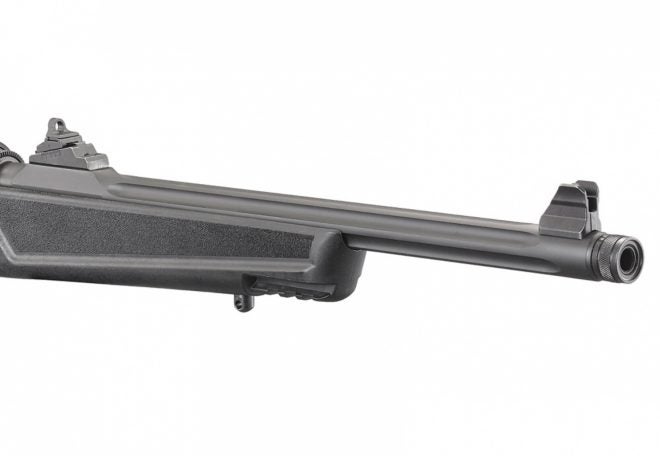
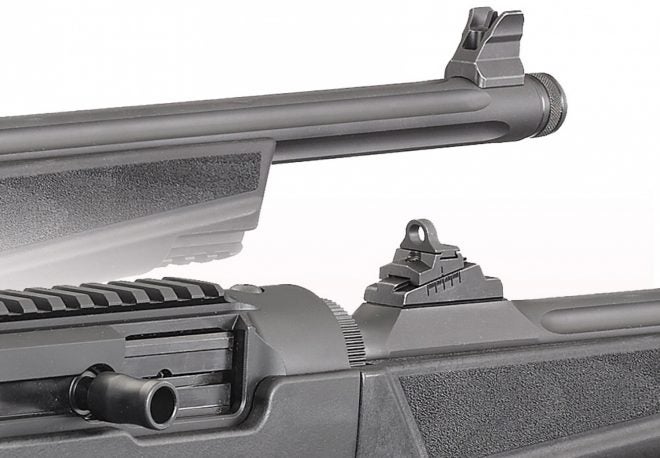
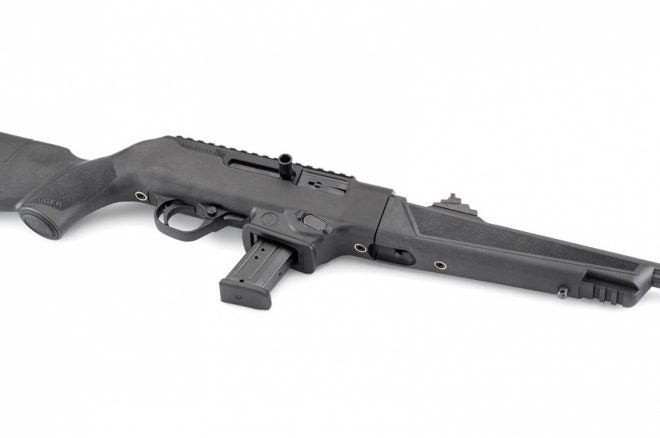

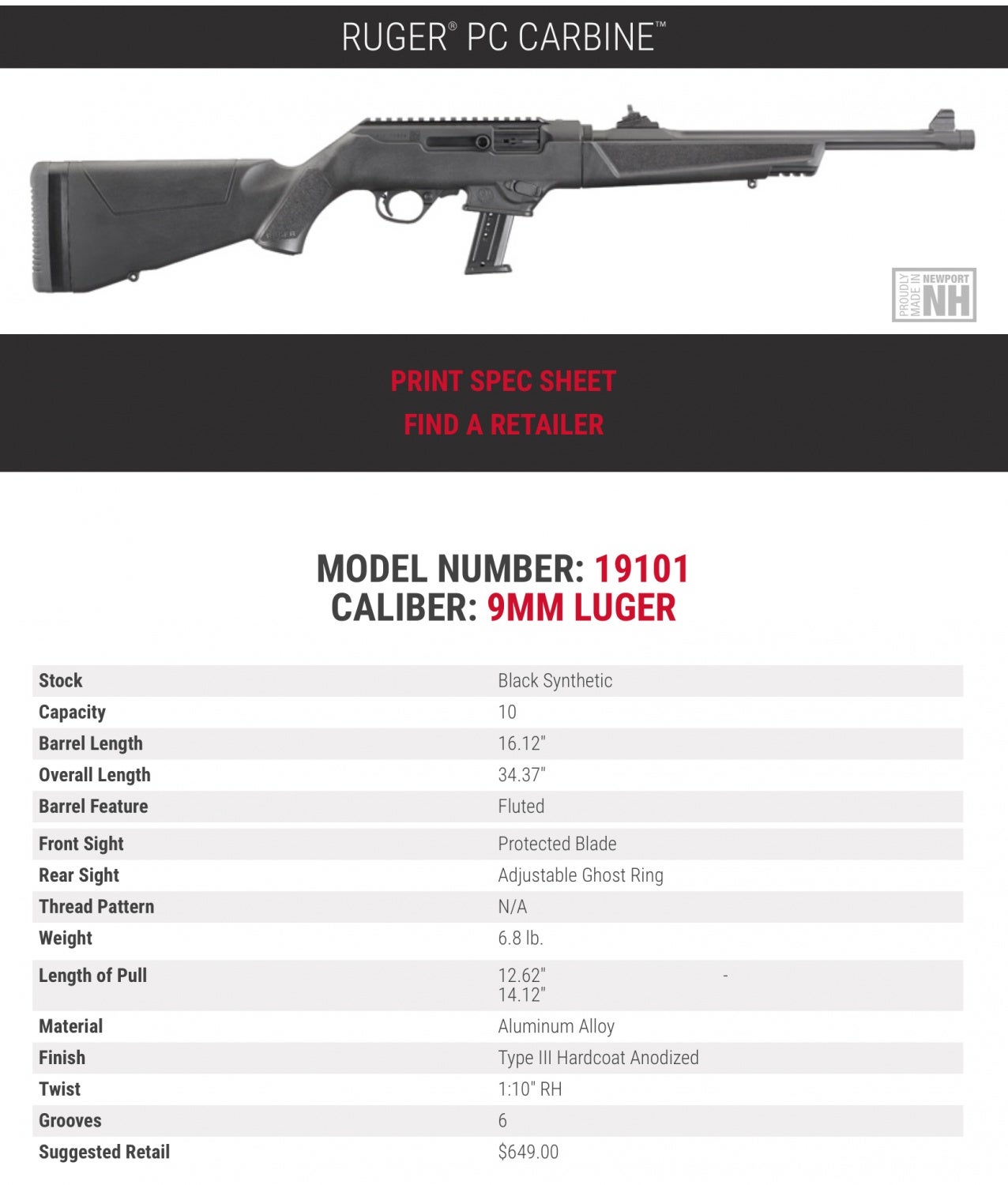
The sun was blistering that early November day, as it drove the temperature up over 100˚F, and the resulting unpredictable winds began to play their awful game. We’d nearly called the hunt for the morning when we spotted him – a magnificent kudu bull with horns spiraling toward the heavens. He was at the back of the herd, keeping his harem of cows ahead of him, and on the downward arc of his huge loping gallop, one bullet from my .300 Winchester Magnum put him in the salt.

The author used a Legendary Arms Works Professional in .300 Winchester Magnum to put this 55-inch kudu bull in the salt. Legendary’s rifles are built for any weather, including this day in South Africa where temps were well over 100 degrees Fahrenheit.
The Big Five, or Dangerous Seven, or whatever you prefer to call the collective of African game animals that can easily end your life certainly gets the lion’s share (pun fully intended) of the spotlight, but the plains game, or more properly put, the antelope species, are much more abundant and affordable. Much has been written about the proper guns and cartridges for African hunting, but it seems there is still considerable confusion about what is needed to effectively hunt the lighter African game.
“Bring your deer rifle!” has been written often, but that may not exactly be the case anymore. More hunters are making the switch to .22 centerfires and 6mm cartridges, and while they work fine for deer for some hunters, they aren’t exactly optimal for Africa. Likewise, a definite increase in the number of deer hunters using MSRs to harvest venison has been seen, and they are illegal for African hunting, irrespective of caliber. So, let’s take a look at some good choices for an African light rifle, and see whether or not you need a new rifle should the Dark Continent be on your bucket list.
Let’s get the caliber thing right out of the way, as it’s a brief and sort of common-sense topic, but should be addressed. In the opinion of this author, based on personal experiences and those of people near and dear to me, for a general caliber choice to hunt the majority of the African antelope, things begin at 6.5mm and go upwards to the .375 H&H Magnum, and the lower end of the scale will depend on which of the species are on your menu. A good 6.5mm, .270, 7mm or .30 will handle most of the species, but for eland — which can hit the 2,000-pound mark — I think a heavy 7mm bullet is the lightest a smart hunter should go. And, because so many of the antelope species inhabit the same dangerous game blocks that the hippo, Cape buffalo and elephant do, the larger calibers engender a whole bunch of confidence, should you be caught in a jam. As far as cartridge choice goes, I prefer a minimum muzzle velocity of 2,300 to 2,400 feet per second (fps) with the heaviest bullets for that caliber. Personally, I like the 7×57 Mauser, .30-’06 Springfield, and .300 Winchester Magnum on the lighter side of things, and also find the .375 Holland & Holland so damned useful it can and will suffice as the one-gun do-all. If you are looking for a dedicated light rifle, look for a cartridge that will pair well with your dangerous game cartridge. There are some classic combinations, like the 7×57 Mauser and .375 H&H; the .30-’06 and .404 Jeffery; the .300 Winchester and .416 Rigby; the .338 Winchester Magnum and .458 Winchester Magnum, so on and so forth.

The Winchester Model 70 is an excellent plains game rifle. This Featherweight Model in 7×57 Mauser is a classic African combination.
But what about the rifle? Well, that can be as much a personal choice as it is practical. I don’t know of any African country that allows the use of semi-automatics, so those are immediately off the plate. Lever guns are generally welcome, and I don’t know of regulations prohibiting pump rifles, though to be honest I’ve never seen one in Africa. Undoubtedly, the most popular action type used for hunting African plains game is the bolt action rifle, followed by the single-shots and, more rarely, the double rifle. Firepower is generally not an issue, as almost all the animals will be hunted via tracking or spot-and-stalk, but it’s sure nice to have a quick follow-up shot should your first shot go awry. The bolt guns outnumber the single shots, and I’d feel comfortable saying the singles outnumber the doubles, especially in plains game calibers.

The bolt of the M704 action used in Legendary Arms Works rifles. It’s a controlled round feed action, without the Mauser-style sideband. The large extractor makes for solid performance, and Legendary even uses Cerakote on the firing pin.
As with any hunting situation, your African light rifle must fit you well and balance nicely. You’ll be carrying this rifle an awful lot while trekking across the vast areas of Africa, and the heavy bull-barreled rifles can be a bit awkward after a couple of days. If you take a look at some of the classic safari photos, the rifles of yesteryear were designed for proper balance; while the riflescope certainly wasn’t anywhere near as popular as it is today — and a huge scope will definitely affect the balance of any gun – we can still set up our rifle with that consideration in mind. I much prefer the open pistol grip design over the more perpendicular, target style grips, as it handles better in the field, especially when shooting off the three-legged sticks that are so popular across Africa.
Wooden stocks pose no issue in African hunting unless you’re hunting the rain forests of Cameroon and Central African Republic. I’ve never had a walnut stock swell on me in Africa, though several of my rifles proudly bear the scars of the day-in-and-day-out routine of getting your rifle on and off the cruiser while looking for the tracks of your particular species. Synthetic stocks are equally useful and pose no real problem, but as moisture is rarely an issue on safari (it’s usually a lack of moisture that is the bigger problem to hunters), they offer no real advantage either. I’ve used both styles, and will absolutely use both again.
You don’t really need a ton of magnification; as a matter of fact, too much can actually be a hindrance. I like 1.5-5X, 2-7X, 3-9X, and probably a maximum of 4-12X, as field of view is important. Consider the fact that most of the shots in Africa are inside of 200 yards, and you can confidently make those shots with lower magnification. A scope that is mounted low to the bore allows for proper cheek weld, and less felt recoil.
I’d like to give some examples of rifles I feel are well-suited for general plains game hunting, with the following caveat: this is by no means a definitive list, but a guide to help you make a good choice.

The Winchester Model 70 Stainless Classic is equally at home in the States as it is in Africa. Chambered in .300 Winchester Magnum, this makes for a very versatile combination.
The Rifleman’s Rifle. A good Winchester Model 70, chambered in a sensible cartridge will serve anyone well in Africa. My own particular favorite is a Stainless Classic chambered to .300 Winchester Magnum, topped with a Leupold VX-6 2-12×42 scope. It’s not exactly a pretty rifle, but it most certainly does the job. The stainless barrel and action are not so shiny as to spook game, and the synthetic stock saves me from worrying about any dings or scratches. My pal Marty Groppi has a Model 70 that would also make a perfect African light rifle; it’s one of the older push-feed models, in the Featherweight configuration – replete with uber-cool Schnabel forend – chambered in 7×57 Mauser. Neither rifle is cumbersome, both have good triggers, and I’d happily use either on safari.

The Ruger No. 1 is a wonderful choice for a plains game rifle, as it is compact and very effective. This 1V, in .300 Winchester Magnum, is a versatile choice should you be hunting the more open terrain where shots could get longer.
The Ruger No. 1. If the single shot is how you roll, I can’t think of a better choice than the Ruger No. 1. Tracing its roots firmly back to the Farquharson action, the simple elegance of the No. 1 is the attraction; due to a lack of a receiver the overall length of the rifle will be shorter, and the choice of chambering among new and used rifles is wide enough to please nearly anyone. Using a falling block action, the Ruger No. 1 is plenty strong enough to handle even the largest magnums. They balance and carry very well, and can be reloaded much faster than one would think, especially in the hands of a shooter well-versed in the ways of the single shots. A handy No. 1, chambered in say .308 Winchester or .280 Remington would make a great choice for plains game. Being truly ambidextrous with a tang mounted safety, the No. 1 also makes a great choice for the southpaws.

Savage rifles, long famous for their affordability and accuracy, will do just fine on the Dark Continent. This is the author’s Model 116, chambered in 6.5-284 Norma; perfect for longer shots in the Kalahari or Karoo.
Savage Model 16/116. Offering an excellent blend of affordability and features, the Savage rifles are an underrated choice for traveling sportsman. Their AccuTrigger makes for precise shot placement, and it’s very difficult to argue with the Savage barrels. My own Savage Model 116 – chambered in 6.5-284 Norma – makes a good choice for every species but eland. Pushing a 156-grain Norma Oryx bullet to 2,750 fps, the high Sectional Density bullet will deliver the goods, and the Savage platform is one that is equally affordable and dependable. I like the tang safety – ambidextrous and conveniently located — and Savage’s floating bolt head addresses many accuracy issues. My own rifle has a barrel on the heavier side, but would make an excellent choice for a hunter headed to the Karoo or Kalahari for distant springbok and gemsbok. As a side note, I had Savage put their Bear Hunter stock — with the hinged floorplate – on my rifle, to avoid the detachable magazine. I lose things easily, and with the amount of ground you’ll cover on a plains game hunt, finding something you drop can be a terrible chore.

A good Remington 700 will serve well on an African safari. Shown here is Dave deMoulpied’s Model 700 Classic in .350 Remington Magnum, a hard-hitting cartridge that will handle even the largest antelope species.
The Remington Model 700. Remington’s pride and joy is equally at home on the African plains as it is here at home. The Remington 700 design, with its push feed action and an extractor on the small side of the scale, may not make the optimum Dangerous Game rifle, but in common medium calibers it is a solid choice. Simple, effective and plentiful, the Model 700 can be obtained without breaking the bank. I personally prefer a three-position safety – considering the amount of loading and unloading you’ll do during the duration of a safari – but the track record of the 700 speaks for itself. Some of those super-shiny BDL Models can be a little bright in the African sun, but it’s not the end of the world if that’s the rifle you shoot best. My good buddy Dave deMoulpied uses a 700 Classic chambered in .350 Remington, and that stubby little gem will handle and antelope ever put on the African continent.

An ancient warthog taken by Suzanne Massaro with a Legendary Arms Works Big Five rifle. On a mixed bag hunt, there’s nothing wrong with hunting plains game with the .375
Legendary Arms Works. This little company from Pennsylvania is making some great rifles, if they are a little pricier than the others I’ve mentioned. That kudu bull I spoke of earlier fell to a Legendary Arms Works (LAW) Professionalin .300 Winchester Magnum, and my wife uses a LAW Big Five rifle, in .375 H&H Magnum as her general hunting rifle, with the lighter bullets working perfectly on any and all plains game species. Both models from Legendary use the Ed Brown Model 704 action, a sort of hybrid between a push-feed and controlled round-feed. It lacks the Mauser-style sideband and claw extractor, but picks the cartridge rim up right out of the magazine, and offers a large extractor. Stocked in hand-laid fiberglass, the Legendary Arms Works rifles are also completely covered in Cerakote – right down to the firing pin. I love that feature, as my Sicilian acidity, when combined with the African heat and excitement of safari, can put the best bluing to the test. Between the wife and me, we’ve used both models on a number of game species, including sable, kudu, waterbuck, impala and warthog. They are as dependable in Africa as they are in the nastiest climate North America can throw at them. With a factory installed and tuned Timney trigger on board, a good barrel, and that solid M704 action, the Legendary line represents a worthy investment to the traveling hunter.
I hope this helps to illustrate the idea of a good plains game rifle. In my opinion, simple equates to better; the bush is no place for things to go wrong. I don’t necessarily feel the plains game rifle needs to be furnished with iron-sights – the way a dangerous game rifle does – but your choice of action, mounts – I am completely enamored with Talley rings and bases, for their reliability – and optics should be optimized for the African climate: harsh, rugged and unforgiving. While the examples were given only represent a small cross-section of suitable rifles for a plains game hunt, the characteristics of those rifles should provide a guideline for the prospective hunter. Make the time, spend the money, and enjoy the African veldt!
To purchase a Remington Model 700 rifle on GunsAmerica, click here.
To purchase a Ruger No.1 Rifle on GunsAmerica, click here.
To purchase a Winchester Model 70 on GunsAmerica, click here.
To purchase a Savage Model 16/116 on GunsAmerica, click here.
To purchase a Legendary Arms Works rifle on GunsAmerica, click here.
Need a new truck gun? Look no further than Inland Manufacturing’s new Motor Patrol Pistol
The M30-IMP (Inland Motor Patrol pistol) is a compact version of the company’s full-size .30 carbine caliber firearms.
So you get all the fun of its big brother but in a more carry-friendly configuration.
The M30-IMP is outfitted with an Ergo Sure pistol grip and AR-style pistol buffer tube. This means users can attach any ATF-approved stabilizing brace with ease to round out the package.
Purchasers will receive one 10-round magazine. Inland notes that it can accept larger capacity military and civilian mags. Just make sure you live in a free state (not New York or California) if you’re going to go that route.
“These new features combine to make the Inland M30-IMP Motor Patrol Pistol a fun, efficient, compact, robust, intimidating looking and accurate handgun suited for personal defense,” said Charles Brown, MKS Supply, LLC, president, in a press release.
“The Inland M30-IMP is legally defined as a handgun making it an excellent choice for carry in a vehicle,” he added.
The MSRP is $1,399. It should be available “soon.” Visit Inland’s website for more information.
Shop for an Inland M1 Carbine on GunsAmerica.

















A Ted Williams/Sears Roebuck Model 100 chambered in 30-30 Winchester. This rifle is a Winchester Model 94 made under contract with Sears.


















